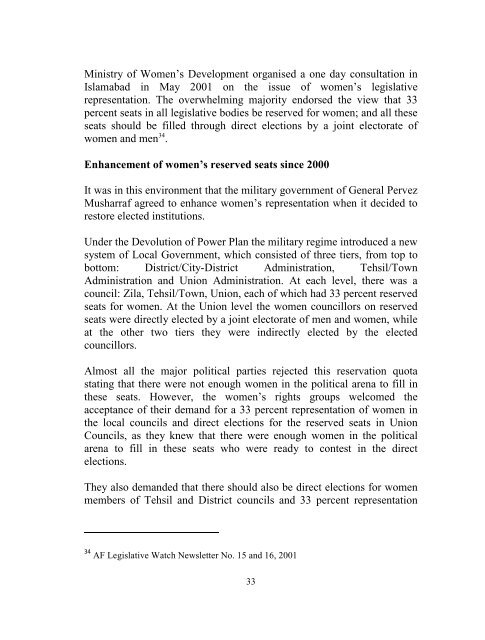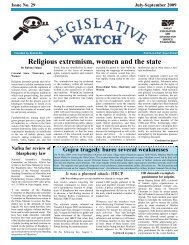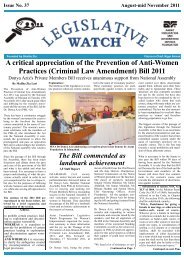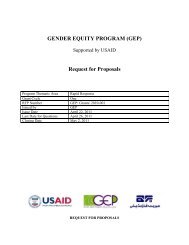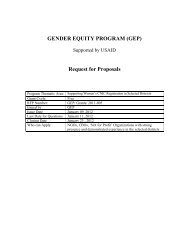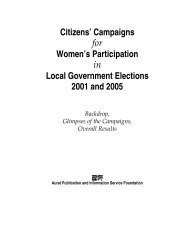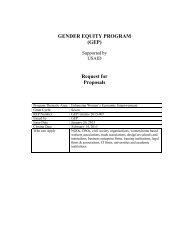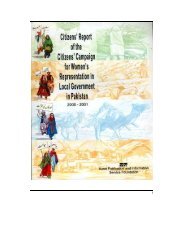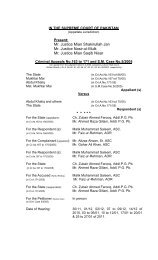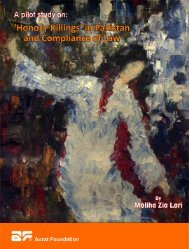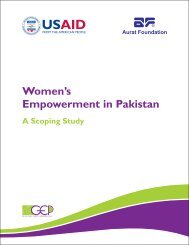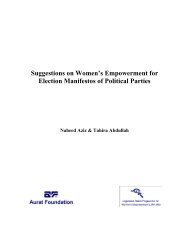Legislative Quotas for Women: A global and ... - Aurat Foundation
Legislative Quotas for Women: A global and ... - Aurat Foundation
Legislative Quotas for Women: A global and ... - Aurat Foundation
- No tags were found...
Create successful ePaper yourself
Turn your PDF publications into a flip-book with our unique Google optimized e-Paper software.
Ministry of <strong>Women</strong>’s Development organised a one day consultation inIslamabad in May 2001 on the issue of women’s legislativerepresentation. The overwhelming majority endorsed the view that 33percent seats in all legislative bodies be reserved <strong>for</strong> women; <strong>and</strong> all theseseats should be filled through direct elections by a joint electorate ofwomen <strong>and</strong> men 34 .Enhancement of women’s reserved seats since 2000It was in this environment that the military government of General PervezMusharraf agreed to enhance women’s representation when it decided torestore elected institutions.Under the Devolution of Power Plan the military regime introduced a newsystem of Local Government, which consisted of three tiers, from top tobottom: District/City-District Administration, Tehsil/TownAdministration <strong>and</strong> Union Administration. At each level, there was acouncil: Zila, Tehsil/Town, Union, each of which had 33 percent reservedseats <strong>for</strong> women. At the Union level the women councillors on reservedseats were directly elected by a joint electorate of men <strong>and</strong> women, whileat the other two tiers they were indirectly elected by the electedcouncillors.Almost all the major political parties rejected this reservation quotastating that there were not enough women in the political arena to fill inthese seats. However, the women’s rights groups welcomed theacceptance of their dem<strong>and</strong> <strong>for</strong> a 33 percent representation of women inthe local councils <strong>and</strong> direct elections <strong>for</strong> the reserved seats in UnionCouncils, as they knew that there were enough women in the politicalarena to fill in these seats who were ready to contest in the directelections.They also dem<strong>and</strong>ed that there should also be direct elections <strong>for</strong> womenmembers of Tehsil <strong>and</strong> District councils <strong>and</strong> 33 percent representation34 AF <strong>Legislative</strong> Watch Newsletter No. 15 <strong>and</strong> 16, 200133


